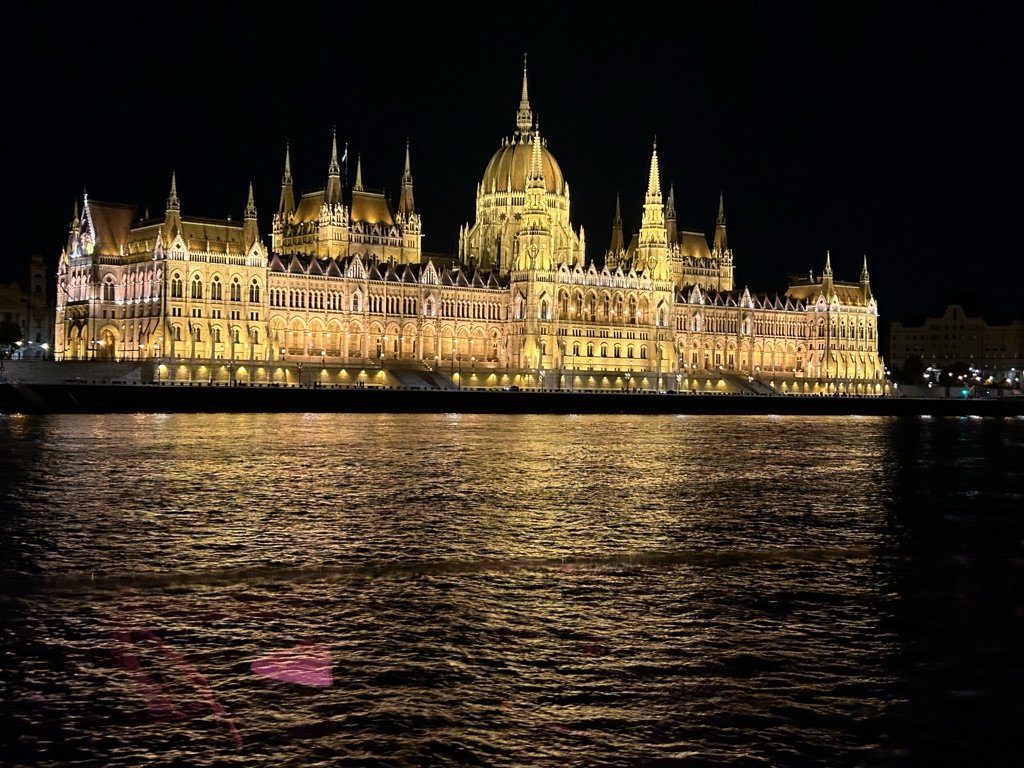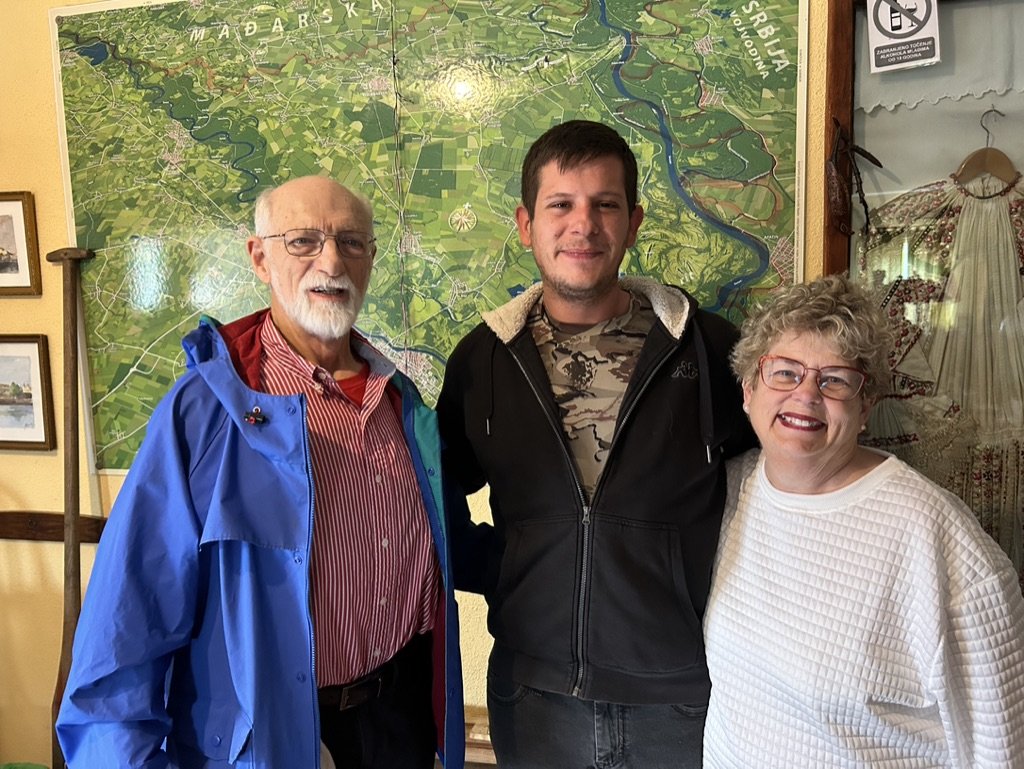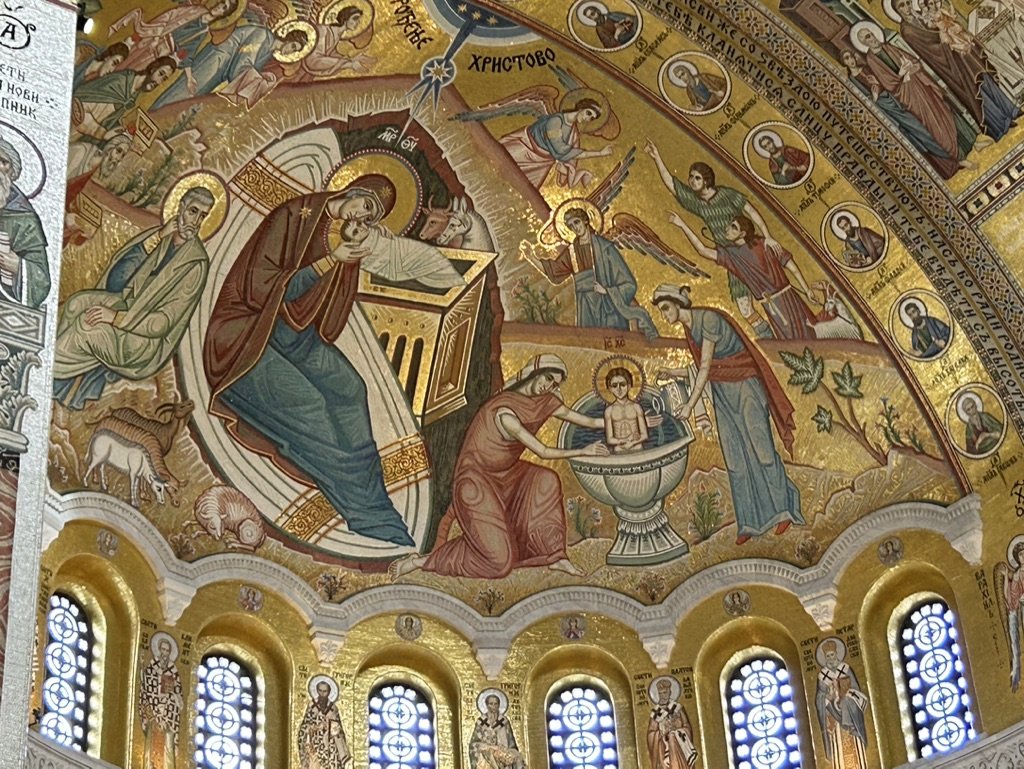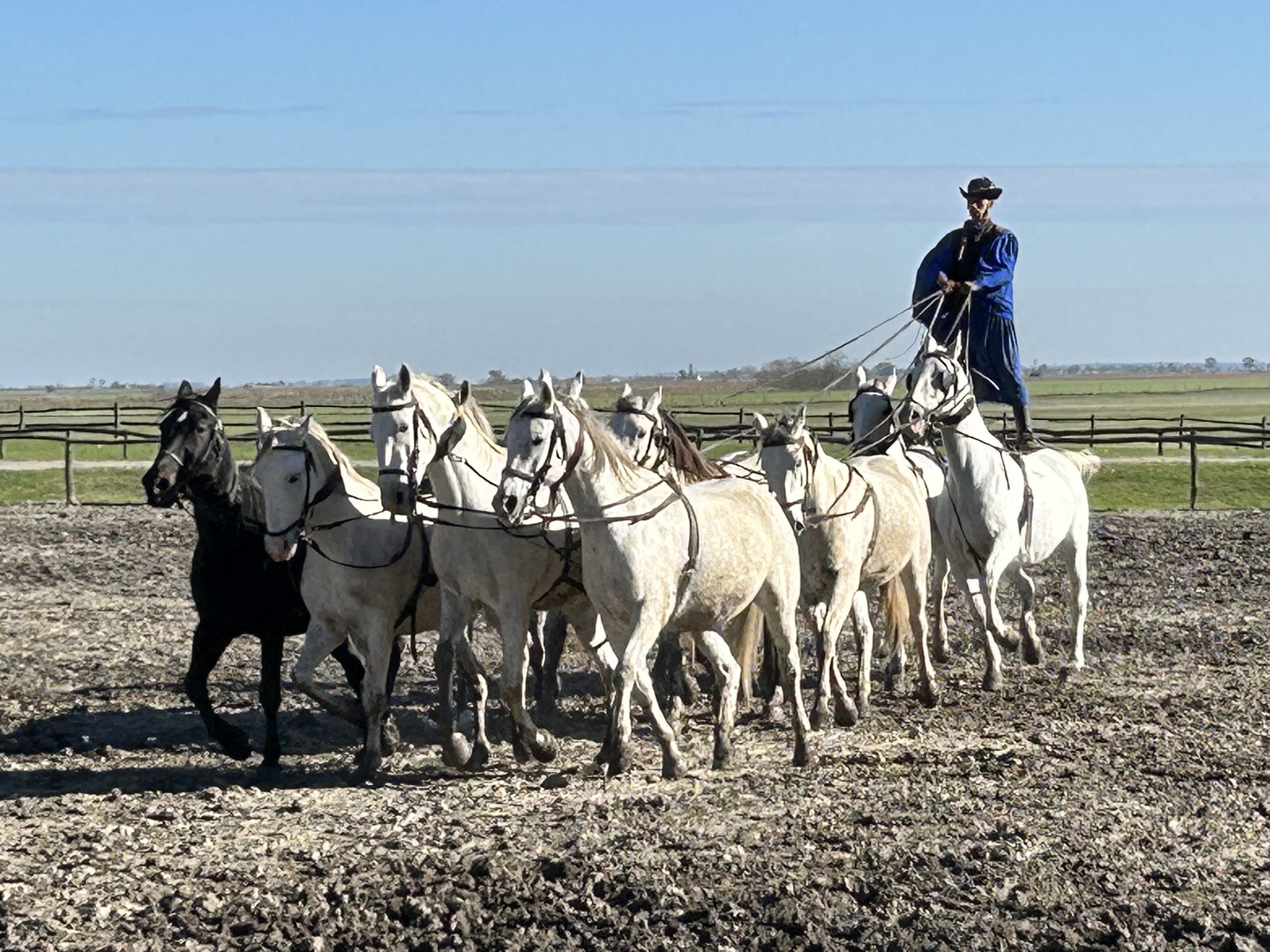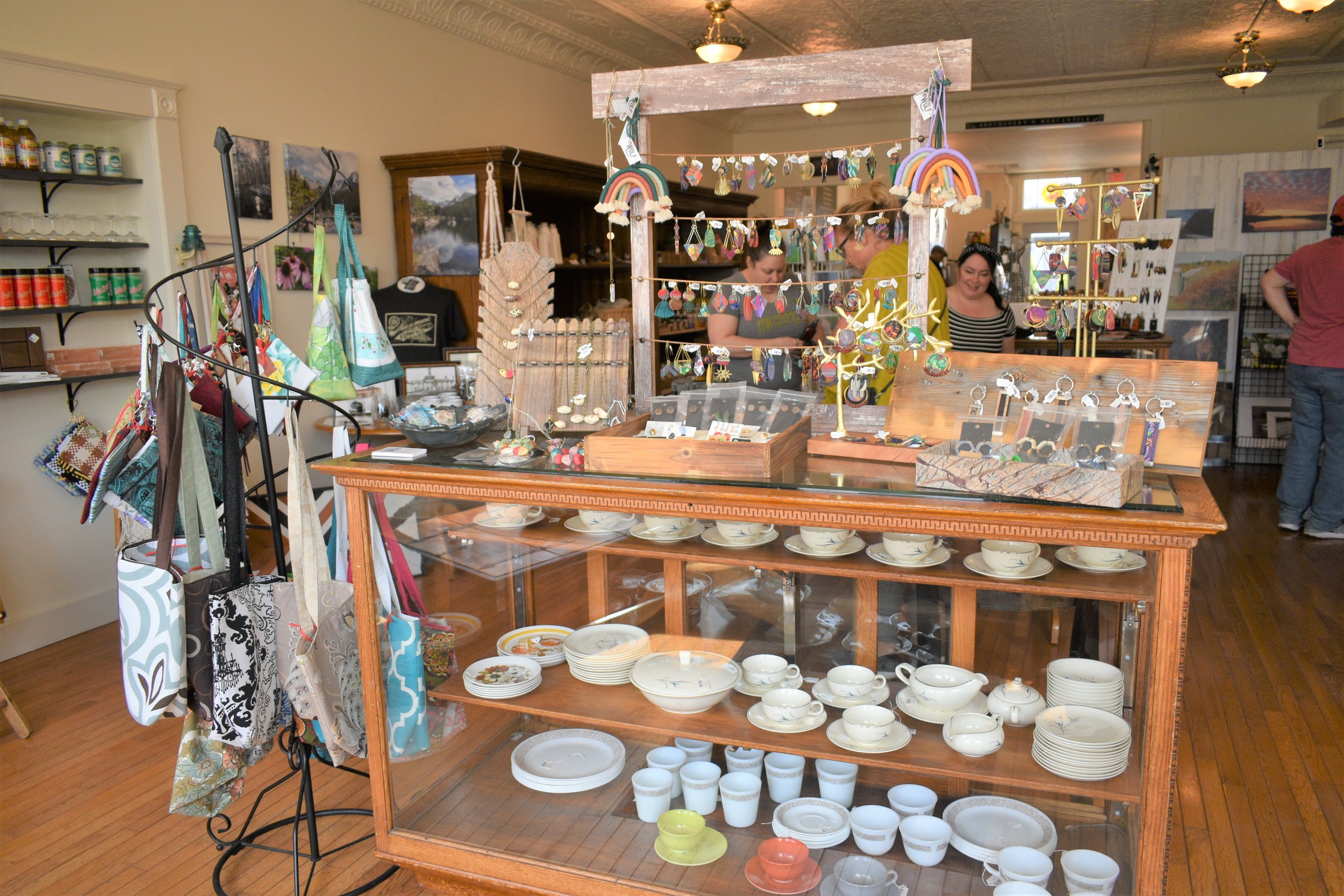An Eastern Europe Tour: a perspective from Driftless folk (part 1)
My wife, Barb, and I recently enjoyed an eight-day Viking River Cruise on the Danube river, with ports of call in five countries: Hungary, Croatia, Serbia,Bulgaria, and Romania.
The cruise was not merely a sightseeing trip; it was a journey into the complicated history and culture of Southeastern Europe. In recent memory, these former Iron Curtain countries have thrown off the yoke of Communism and faced new challenges in their transition to Western style democracy. The most painful of these challenges was the devastating civil war of the 1990s in Yugoslavia. In each of the cities we visited, we met locals who shared their personal memories of the Communist period and perspectives on Balkan strife, as well as their rich cultural history and hopes for the future.
Sonya Bakalova, the ship’s Program Director, for example, was born in the former Czechoslovakia in 1965, during the Cold War. At age ten, her family moved to Bulgaria, the birthplace of her father, because otherwise he would have had to repay the Bulgarian government for the free university education he received there.
Sonya recalled the depressed humor of that era to describe Communism in terms of the “black cat analogy” in philosophy: “Marxism is like being in a dark room and looking for a black cat that isn’t there; Leninism is like being in a dark room and looking for a black cat that isn’t there and shouting ‘I found it!’” “Life wasn’t so terrible,” according to Sonya; “we didn’t know any different.” The government ordered children to help in the vineyards during harvest time. “We had to accept the boring part to get to the fun stuff.”
There was a limited supply of consumer goods and big-ticket items. The purchase of an automobile, for instance, involved a wait of five to seven years, and it was not possible to specify the model. There were some perks to the Communist system, such as two years of paid leave for women after giving birth, and guaranteed employment—in one’s assigned position.
“I did not feel that I was not free,” Sonya said, “We accepted limitations, such as travel restrictions. Looking back, however, I see that society created conformists.”
Information was controlled. Sonya’s family did not learn of the 1986 Chernobyl disaster until a neighbor, who was a former military officer, brought a Geiger counter to their community garden plot.
Education reinforced the Communist party line. Children were taught to calculate the spread of radiation of a nuclear bomb dropped by the United States on their home town. Providing the “correct” answers to a political exam was critical to university admission. (A booklet with the “correct” answers could be had for a small fee.) As a class leader, Sonya delivered an address, omitting the obligatory nod to the Communist party. A comrade auditing her speech afterward demanded, “How could you leave out the most important part?”
As a 19-year-old university student, Sonya was assigned to pick up a Westerner at the airport and to report everything he said during the 30-minute transit to his hotel.
After the fall of the Berlin Wall brought an end to Communism in Bulgaria, a new generation has become accustomed to free expression. When Sonya’s 33-year-old daughter, a graduate student, refused to accept her academic advisor’s suggestions, Sonya cringed. Old habits are hard to shake. After hearing her story, Barb thanked Sonia for sharing and vowed to thank God for having been born in the U.S. The two women embraced in a profound expression of their common humanity.
We learned that at 1,775 miles, the Danube is Europe’s second longest river after the Volga. It flows through ten countries and hosts four capitals on its banks, including Budapest, Hungary, where we embarked on our cruise.
Hungary was founded in 896 A.D. by the Magyars, nomadic horsemen, according to Eva, our local guide. With a population of 9.8 million, the country is slightly smaller than the state of Indiana. Budapest, its capital, straddles the Danube River, with traditional hillside Buda on one side and modern Pest on the other. As the driver of our tour bus navigated the streets of downtown Pest, Eva explained that the beautiful art nouveau buildings we were passing are the result of an ordinance stipulating that 20% of a proposed building’s budget must be set aside for the facade.
She recalled her parents’ stories of the 1956 uprising in protest of harsh governmental restrictions. People were not allowed to leave the country; it was illegal to be unemployed, and an individual was not allowed to have more than the equivalent of $50 cash. Alcoholism and suicide rates were among the highest in the world. More than 200,000 Hungarians escaped the country during that period, including one family that moved into the apartment building next to my childhood home in Chicago. After the uprising was put down by Russian tanks, conditions improved. The 1970s and 80s, were called the “Goulash Years,” when the government provided a bit more freedom and the people had more food. At the Heroes’ Square monument, Eva told us how, as a child, she was proud to march in Communist party parades.
Crossing the Elizabeth Bridge to the Buda portion of Budapest, our tour bus passed the Buda Palace, an impressive icon of the city. Illuminated at night, it was our first view when we checked into our room at the Continental Hotel. We got off the bus and followed our guide on a walking tour of the historic palace area, including Matthias Church. On the way back to our hotel, Eva pointed out sixty pairs of 1940s style shoes, sculpted in iron, on the bank of the Danube. They are a memorial to the thousands of victims, many of them Jews, executed and dumped into the river by the Hungarian Arrow Cross police during World War II. They were forced to leave their shoes on the riverbank—shoes had value.
Sailing away from Budapest, the Ullur made one more port of call in Hungary: Kalocsa, known as Hungary’s paprika capital. Actually, paprika, which gives Hungarian goulash its distinctive flavor, was brought to Hungary by the Ottomans, along with roses and tulips.
Kalocsa’s main claim to fame, however, is the establishment of a bishopric by King Stephen the Saint in 1000 AD. The archbishop’s palace, church, and other buildings lining Holy Trinity Square are painted yellow, the favorite color of Maria Theresa, Empress of the Austro-Hungarian Empire. In the beautiful church we were treated to a 20-minute concert played on the second largest organ in Europe.
We then boarded our bus for a trip to the Hungarian Puszta, or Great Plain— an area reminiscent of the American West. Our destination: a ranch run by descendants of the nomadic Magyar warriors who settled the Puszta. Nearing the ranch, we spotted mounted cowboys in their billowy blue-andblack Hungarian garb. Soon we were seated in the viewing stands of large corral where these cowboys, or csikós, were about to give us a show.
What followed was a breathtaking demonstration of horsemanship. Four horsemen (and one old fellow on a burro) raced around the corral, cracking whips that sounded like gunshots. An announcer explained that the purpose of this exercise is to get the horses used to the sound of gunfire, so that they would be fearless in battle. The riders actually laid their horses down and stood atop them. The most impressive stunt was called a “five in hand,” or “Puszta fiver,” in which a cowboy stood bareback atop two horses at once while holding the reins and driving six additional horses.
A tour of the stables, with its longhorn steer and rack sheep followed the show, and then it was back to the ship for the evening. After a good night’s sleep on the Danube, we awoke to new day and a new country— Croatia! Our ship docked at Vukovar, directly across the river from Serbia. During the breakup of Yugoslavia in the early 1990s, Vukovar was 80% destroyed, and 22,000 civilians were forced into exile. Our local guide pointed out the bullet-ridden water tower, retained by the city as testimony to the horrors of that civil war.
Our shore excursion in Croatia took us beyond Vukovar and the adjacent city of Osijek to Kopačevo, a rural village of 460 population, where we were to meet Mathew Majhen, 24, host of a guest house and hobby farm. Mathew welcomed our small group with shots of a local liquor, coffee, and cake. He showed us a map of the surrounding area, a nature preserve popular with fishermen and hunters, including, at one time, the Romanian dictator, Nicolae Ceausescu. Mathew proudly described his father’s attempt to defend their village from the Serbian army in 1991. He even modeled a grotesque, furry mask with long, pointed horns, worn by his warrior ancestors to frighten their enemies in battle.
Back onboard the Ullur, Barb said, “Honey, I didn’t get a bell from Croatia.” She collects bells from wherever we visit. Down the gangplank I went to Vukovar in search of a souvenir shop. I struck out, as the only such store in town was closed. My expedition was not in vain, however, as I got to see the town close up, without a guide’s narration. I observed folks enjoying the evening at outdoor cafes, groups of young people doing what young people do, and signs of normal life. It was pleasant. Someone suggested that I try the grocery store, as they carry an assortment of trinkets. No bells there, so I settled on a miniature of the Vukovar water tower, thinking that I might be able to attach a tinker bell to it for Barb’s collection.
That evening, four local musicians came on board, in colorful Croatian costumes, and performed traditional folk songs, along with a couple of country tunes, including John Denver’s “West Virginia.” Passengers clapped along, as the music bridged the gap between American and Balkan cultures. Many Americans may think of Serbia as “the bad guy of the Balkans,” based on their memories of the destruction of Sarajevo, site of the 1984 Winter Olympics, during the 1990s breakup of Yugoslavia, and its dictator, Slobodan Milošević, indicted for war crimes. It was also the target of U.S. bombing of Serbia, so it must have been the “bad guy,” right? As we were to learn in our brief stay in Belgrade, however, the history of conflict in the Balkans is complicated.
Part 2 coming soon.
Robert Day Potter (“Bob”) was born and raised on the South Side of Chicago and moved to the Driftless Area upon retirement from the University of Illinois at Chicago in 2006. He soon “flunked retirement” and went back to teaching writing and communication at the Reedsburg campus of Madison College. After ten years with Madison College, Bob “retired” again, but has joined the Driftless Now team. His publishing credits include a novel, The Mentor: Shaping a New Generation (2012) and the nonfiction Patriotic Expats: Former G.I.s Describe their Lives in Germany (2019). Bob has a special interest in documenting the stories of Driftless residents. He lives with his wife, Barb, in Hillsboro and may be contacted at robertdaypotter@gmail.com.
